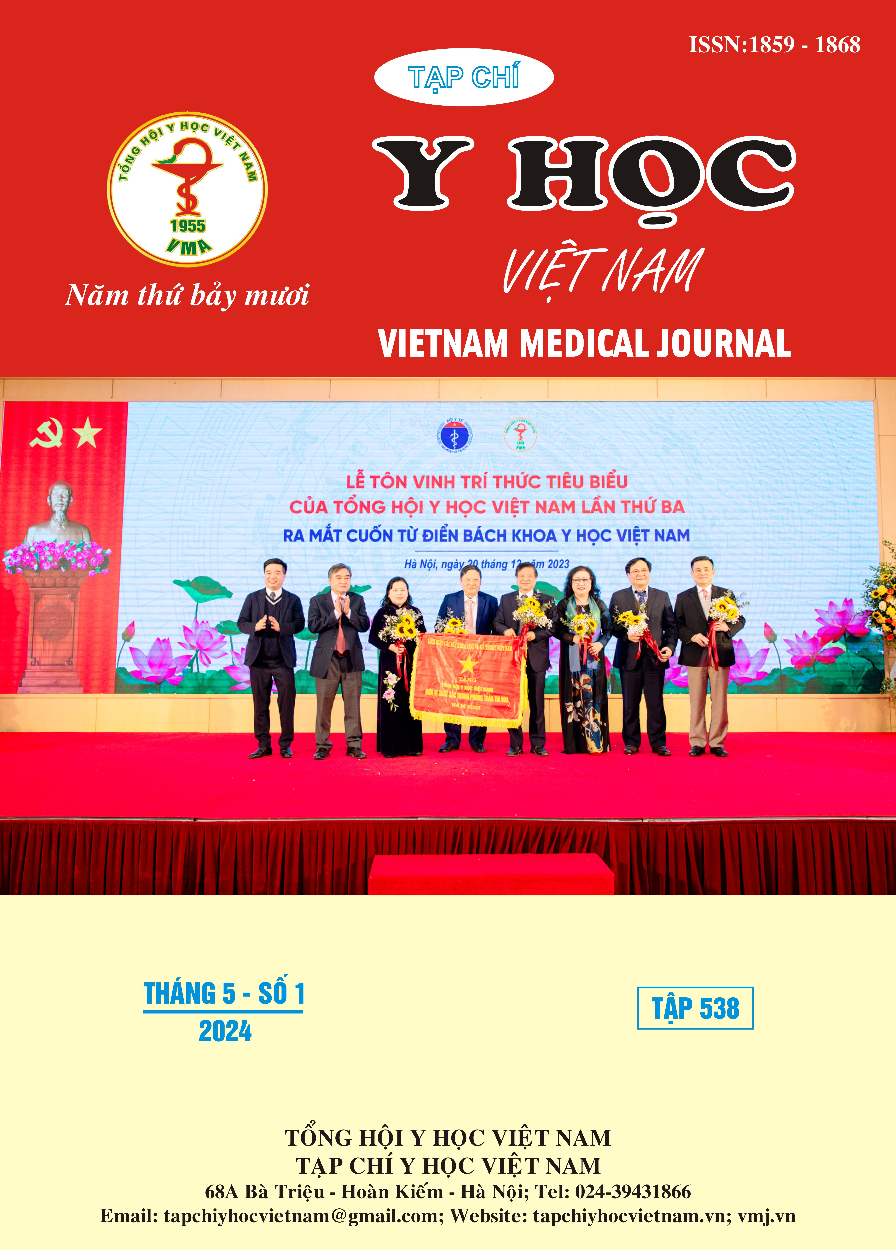THE EVALUATION ON THE RESULT OF BENIGN PROSTATIC HYPERPLASIA MANAGED BY TRANSURETHRAL RESECTION OF THE PROSTATE AT THE HOSPITAL OF POST AND TELECOMMUNICATIONS
Main Article Content
Abstract
Objective: The aim of this study is to evaluate the treatment result of benign prostatic hyperplasia by transurethral resection of the prostate at the Hospital of Post and Telecommunications. Subject and method: This is a descriptive study of 105 patients with Benign prostatic hyperplasia treated by transurethral resection of the prostate at the Hospital of Post and Telecommunications from period of June 2022 to June 2023. Result: All pre-operative patients have been through lower urinary tract symptoms; by which, there was 17,1% of 105 patients got urine retention. The average prostate weight was 62,7 ± 10,2g and among that 68,5% cases had the weight over 50g. After surgery, there was only 12,4% lower urinary tract symptoms remained and the average prostate weight reduced to 23,3 ± 8,4g with 84,8% cases < 30g. Bleeding complication during surgery was 4,8% - 5 patients. There was 7,7% post-surgery complication cases which were: 2 patients got bleeding accounting for 1,9%, 3 patients got urinary retention after urinary withdrawal (2,9%) and 3 patients got urine tract infection (2,9%). Before the surgery, the average IPSS was 27,3 ± 3,9 and mainly was severe cases of 90,5%. There was 71,4% cases with high QoL, average score of 5,2 ± 0,8. After surgery: the average IPSS was 5,6 ± 2,4 mostly was mild cases (87,6%) and the average QoL reduced to 1,6 ± 0,7. The overall results after surgery were 87,6%; 12,4% for good and average respectively; no any cases with bad result. Conclusion: Transurethral resection of the prostate for benign prostatic hypertrophy is a safe and effective method to improve patient quality of life.
Article Details
Keywords
Transurethral resection of the prostate, Benign prostatic hyperplasia
References
2. A.Khanna, and N. Sabharwal. "Mp01-11 long – term reoperation rates following surgery for BPH: variation based on surgical modality". The Journal of Urology; 2019; vol. 201; no. 4; pp. 1195 – 1202
3. Hoàng Văn Công, Vũ Thị Hồng Anh. “Kết quả phẫu thuật nội soi cắt đốt tăng sinh lành tính tuyến tiền liệt tại Bệnh viện Trung ương Thái Nguyên”. Tạp chí Khoa học và Công nghệ Đại học Thái Nguyên; 2021; 226(05): 24 – 28
4. S. Van Rij, and P. Gilling. "Recent advances in treatment for benign prostatic hyperplasia". F1000Research; 2015; vol. 4; pp. 1256 – 1261
5. T. T. Nguyen. "Result of treatment for benign prostatic hyperplasia with endoscopic surgery in Bacninh National Hospital". News of mountainous Medicine – Pharmacy; 2015; vol. 4, pp. 16 – 20
6. Nguyễn Minh An, Ngô Trung Kiên, Bùi Hoàng Thảo. “Đánh giá kết quả phẫu thuật cắt tuyến tiền liệt nội soi qua niệu đạo điều trị bệnh tăng sản lành tính tuyến tiền liệt tại Bệnh viện Đa Khoa Xanh Pôn”. Tạp Chí Y Dược Học Quân Sự Số 1 – 2023; trang 88 – 97
7. Ahmad M., Khan H., Aminullah, Masood I., et al. “Comparison of bipolar and monopolar cautry use in turp for treatment of enlarged prostate”. J Ayub Med Coll Abbottabad; 28(4): 758 – 761.
8. Trần Đức Quý, Vũ Thị Hồng Anh, Triệu Đức Giang. “Kết quả phẫu thuật nội soi cắt đốt điều trị tăng sinh lành tính tuyến tiền liệt tại Bệnh viện Đa khoa tỉnh Bắc Kạn”. Tạp chí Khoa học và Công nghệ Đại học Thái Nguyên;2020; 225(11): 166 – 170


